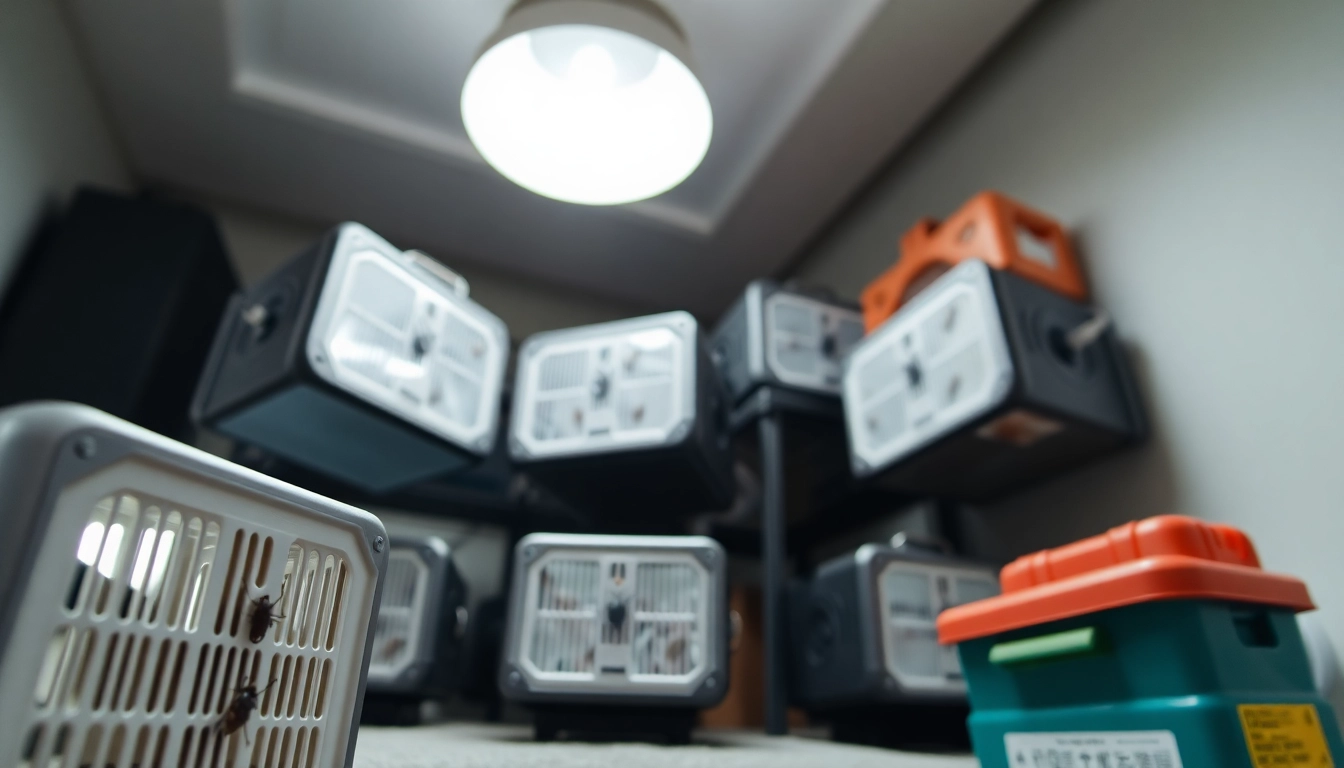
Proven Strategies for Effective Bed Bug Control: Eliminate Infestations Today
Understanding Bed Bugs and Their Behavior
The Biology of Bed Bugs
Bed bugs are small, parasitic insects that feed exclusively on the blood of warm-blooded animals, primarily humans. The scientific name for bed bugs is Cimex lectularius. Adult bed bugs are approximately 4-5 mm in length, flat, and brownish in color, which allows them to hide easily in cracks and crevices. They undergo several life stages, beginning as eggs that are about the size of a pinhead, transparent, and white in color. A single female bed bug can lay between 200 to 500 eggs in her lifetime, which can lead to rapid infestations if not controlled effectively.
Understanding their lifecycle is crucial for effective Bed Bug Control. After hatching, bed bugs will go through five nymph stages before reaching adulthood. They require a blood meal at each stage, which makes them dependent on proximity to human activity. The lifespan of a bed bug can range from several months to over a year, depending on their environment and access to food.
Common Signs of Infestation
Identifying a bed bug infestation early can significantly reduce the difficulty and cost of eradication. Common signs of a bed bug infestation include:
- Bed Bug Bites: These can appear as small, red, itchy welts that usually form in lines on the skin due to the bugs feeding when a person is asleep.
- Blood Stains: Small rust-colored spots on sheets or mattresses are often from crushed bed bugs or blood from feeding.
- Bed Bug Feces: Dark spots, which are fecal matter, can be found on mattresses, walls, or nearby surfaces.
- Egg Casings: Shells of bed bug eggs are tiny, white, and can be found in the same places as feces.
- Musty Odor: A persistent, sweetish smell can indicate a serious bed bug infestation, as it is due to pheromones released by the bugs themselves.
Why Bed Bugs Are a Challenge to Control
The main reason bed bugs are so challenging to control is their ability to reproduce quickly, hiding in small spaces, and their resistance to several common pesticides. Moreover, they can survive for months without feeding, which allows them to lie dormant until a food source is nearby. Their flat bodies enable them to squeeze into tiny cracks in walls, furniture, and even electrical outlets. These attributes make traditional pest control methods less effective, pushing the need for integrated approaches that combine multiple treatment methods.
Preventive Measures for Bed Bug Control
Creating a Bed Bug-Free Home Environment
Creating a bed bug-free environment involves implementing straightforward preventive strategies. Here are key practices:
- Decluttering: Reducing clutter in your home decreases the number of hiding spots for bed bugs. Keep items off the floor and stored away respectfully.
- Encasing Mattresses: Use bed bug-proof mattress and pillow encasements to prevent bed bugs from entering and escaping.
- Regular Inspections: Conduct frequent inspections of beds, furniture, and common hiding places. Early detection is vital for effective control.
- Travel Awareness: Be vigilant when traveling. Inspect hotel beds and furniture for signs of bed bugs before unpacking.
Proper Packing Techniques When Traveling
While traveling, particularly to areas known for bed bug problems, using proper packing techniques can be a game changer. Here are some tips:
- Use Hard-Sided Luggage: Bed bugs are less likely to penetrate hard luggage than soft bags. Use hard-sided suitcases to reduce the risk of carrying bugs home.
- Seal Clothing in Plastic Bags: Ziplock or vacuum-sealed bags can protect your clothes while you’re on the move.
- Keep Luggage Off the Bed: Use luggage racks instead of placing bags on beds or floors in hotels.
- Immediate Laundering: Upon return, wash and dry all clothing on high heat for at least 30 minutes to kill any potential stowaways.
Regular Cleaning and Maintenance Tips
Adopting regular cleaning and maintenance practices can help in preventing and controlling bed bug infestations:
- Vacuum Frequently: Regular vacuuming of floors, carpets, and upholstery can help remove bed bugs and their eggs. Empty vacuum bags immediately outside the home.
- Wash Bedding Weekly: Bed sheets, pillowcases, and slipcovers should be washed weekly on hot settings to kill any bugs.
- Inspect Second-Hand Furniture: Be cautious when bringing in second-hand items. Inspect furniture thoroughly before allowing it into your home.
Effective Bed Bug Control Methods
Chemical Treatments: What You Need to Know
Chemical treatments involve using pesticides specifically formulated to target bed bugs. It’s essential to understand how to use these chemicals safely and effectively:
- Read Labels Carefully: Always follow label instructions for application and safety precautions.
- Targeted Application: Focus on areas where bed bugs are likely to hide, such as mattress seams, bed frames, and baseboards.
- Rotate Chemicals: As bed bugs can become resistant to specific chemicals, rotating between different products can enhance effectiveness.
- Professional Application: If the infestation is large, consider hiring a certified pest control professional who can apply these chemicals safely.
Non-Chemical Solutions: Steam and Heat Treatment
Using non-chemical approaches like steam and heat treatments can also be effective methods of bed bug control:
- Steam Treatments: Steamers can reach temperatures above 120°F, effectively killing bed bugs and their eggs on contact.
- Heat Treatment: Professional heat treatments raise the temperature in affected rooms to a lethal level for bed bugs. This method can effectively eliminate infestations but typically requires professional assistance.
- Freezing: Small items can be stored in a freezer for four days as extreme cold temperatures can kill bed bugs at all life stages.
When to Hire a Professional Exterminator
While DIY methods can be effective, certain scenarios warrant hiring a professional:
- Severe Infestation: If the infestation is extensive and beyond your control, professional help will provide a comprehensive treatment plan.
- Difficulty in Identifying Areas: If you’re unsure where the infestation is concentrated, professionals can conduct thorough inspections and apply tailored solutions.
- Previous Treatment Failures: If previous control methods have failed, a professional may have access to more effective tools and strategies.
DIY Bed Bug Control Tips
Household Remedies: What Works?
There are various household remedies that individuals may use in an attempt to control bed bugs:
- Alcohol Sprays: Rubbing alcohol can kill bed bugs on contact, but will not impact eggs unless used in high concentrations and needs to be applied repeatedly.
- Essential Oils: Some essential oils, such as tea tree oil and lavender, have been reported to repel or kill bed bugs, but their effectiveness varies widely and should not be solely relied upon.
- Diatomaceous Earth: This natural powder can dehydrate and kill bed bugs that come into contact with it, provided it is applied in the correct locations.
Creating Your Own Traps
Traps can be effective in monitoring and controlling bed bug populations:
- Interceptor Traps: These can be placed under bed legs to catch bugs as they attempt to climb up. They create a barrier that prevents bugs from reaching the bed.
- DIY Sticky Traps: You can use strong adhesive boards to create traps in areas where you’ve seen bed bugs, but these are usually more effective for monitoring than control.
Success Stories from DIY Efforts
Many homeowners have shared their success stories regarding DIY bed bug eradication efforts:
- One couple reported success after combining regular vacuuming with the use of diatomaceous earth in areas where bed bugs were commonly found.
- A family recounted their success using a steam cleaner on mattresses and carpets, subsequently eliminating visible signs of bed bugs.
Monitoring and Follow-Up After Treatment
How to Inspect Your Home Post-Treatment
After treatment, continual inspection is vital to ensure that bed bugs remain eradicated:
- Conduct Regular Checks: Look for any signs of bed bugs weekly for the first few months after treatment.
- Monitor Traps: If using traps, check them regularly to assess any ongoing infestation.
- Seek Professional Help If Necessary: Don’t hesitate to contact a professional if you notice renewed activity.
Preventing Reinfestation: Long-Term Strategies
After successful treatment, adopting long-term prevention strategies is essential:
- Ongoing Cleanliness: Maintaining a clean and organized home environment is crucial in preventing future infestations.
- Educating Others: Ensure family members and roommates understand the signs of bed bugs and conduct check-ups.
- Regular Professional Inspections: Annual inspections by pest management professionals can help detect issues before they become larger problems.
Resources for Ongoing Education and Support
Various resources provide valuable education and support in the fight against bed bugs:
- University Extension Services: Many universities offer online resources and local support for pest management.
- Local Health Departments: These can provide guidance and free resources on pest control.
- Online Forums: Communities such as Reddit have ongoing discussions where individuals share experiences and solutions.
